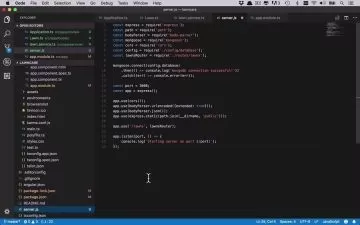Angular 13 Best Practices
Jim Cooper
1:36:49
Description
As you learn a new technology, it's easy to miss or forget some of the best practices. This course will teach you some of those best practices within Angular.
What You'll Learn?
It's easy to create simple applications in Angular, but once you start building larger, more complex applications, you can quickly run into legibility, scalability, and performance issues if you're not careful. In this course, Angular 13 Best Practices, you'll learn best practices in Angular. First, you'll discover the Angular project and folder organization. Next, you'll explore Angular module organization and how to use Core, shared, and feature modules. Then, you'll learn about Angular component, service best practices, and some really important performance best practices to ensure you're building fast and scalable Angular applications. Finally, you'll cover a few basic coding best practices while you're at it. By the end of this course, you'll know all the key best practices to help you build respectable, high quality, and scalable Angular applications.
More details
User Reviews
Rating
Jim Cooper
Instructor's Courses
Pluralsight
View courses Pluralsight- language english
- Training sessions 39
- duration 1:36:49
- level average
- Release Date 2023/10/10









